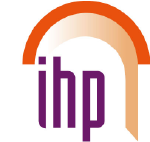Abstract
We consider the Constrained-degree percolation model in random environment on the square lattice. In this model, each vertex v has an independent random constraint which takes the value with probability . Each edge e attempts to open at a random uniform time in , independently of all other edges. It succeeds if at time both its end-vertices have degrees strictly smaller than their respectively attached constraints. We show that this model undergoes a non-trivial phase transition when is sufficiently large. The proof consists of a decoupling inequality, the continuity of the probability for local events, and a coarse-graining argument.
Nous considérons le modèle de percolation à degré contraint dans un environnement aléatoire sur le réseau carré. Dans ce modèle, chaque sommet v a une contrainte aléatoire indépendante qui prend la valeur avec probabilité . Chaque arête e tente de s’ouvrir à un temps uniforme aléatoire dans , indépendamment de toutes les autres arêtes. Il réussit si à l’instant ses deux sommets d’extrémité ont des degrés strictement inférieurs à leurs contraintes respectives attachées. Nous montrons que ce modèle subit une transition de phase non triviale lorsque est suffisamment grand. La preuve consiste en une inégalité de découplage, la continuité de la probabilité des événements locaux et un argument de renormalisation.
Funding Statement
The research of Rémy Sanchis was partially supported by FAPEMIG (PPM 0600-16) and CNPq.
Diogo dos Santos was partially supported by PNPD/CAPES.
Roger Silva was partially supported by FAPEMIG (Universal APQ-00774-21).
This study was financed in part by the Coordenação de Aperfeiçoamento de Pessoal de Nível Superior, Brasil (CAPES), Finance Code 001.
Acknowledgments
The authors are grateful to two anonymous referees for their valuable comments and suggestions.
Citation
Rémy Sanchis. Diogo C. dos Santos. Roger W. C. Silva. "Constrained-degree percolation in random environment." Ann. Inst. H. Poincaré Probab. Statist. 58 (4) 1887 - 1899, November 2022. https://doi.org/10.1214/21-AIHP1231
Information





